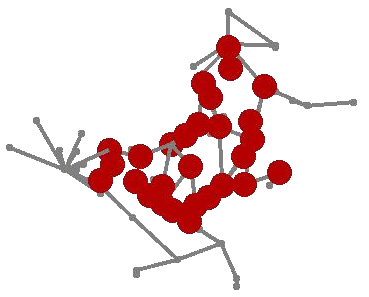Growth of Hydractinia Echinata
Phenotypic plasticity might be a necessary strategy of sessile marine organisms to withstand changing environmental conditions due to climate change. Hydractinia echinata, a colonial hydroid, in vivo encrusting gastropod shells inhabited by the hermit crab Pagurus bernhardus, is a good candidate for investigations how organisms react on rapid changing environmental conditions.

Lab experiments initiated by J. Strahl and D. Tschink from the working group Animal Biodiversity and Evolutionary Biology og G. Gerlach at the ICBM build the base for the investigation of the key processes leading to morphological plasticity of the organism.
A discrete process oriented model is developed simulating the growth of the colony under different environmental forcing. The model represents the main characteristics of the colony such as polyp numbers and colony area and also simulates the spatial growth by a network like model setup.
Tschink, D, Gerlach G, Winklhofer M, Kohlmeier C, Blasius B, Eickelmann L, Schadewell Y, Strahl J (2021) Diminished growth and vitality in juvenile Hydractinia echinata under anticipated future temperature and variable nutrient conditions. Scientific Reports 11: 7483 DOI: 10.1038/s41598-021-86918-4